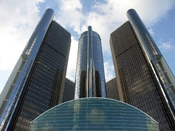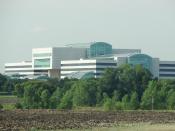The inancial analysis of the company for 1995, comparing data from 1993 and 1994 Very well researched
General Motors - Financial Ratio Analysis
I. General Motors History Highlights
In its early years the automobile industry consisted of hundreds of firms, each producing a few models. William Durant, who bought and reorganized a failing Buick Motors in 1904, determined that if several automobile makers would unite, it would increase the protection for the group. He formed the General Motors Company in Flint, Michigan, in 1908.
Durant had bought 17 companies (including Oldsmobile, Cadillac, and Pontiac) by 1910, the year a bankers' syndicate forced him to step down. In a 1915 stock swap, he regained control through Chevrolet, a company he had formed with race car driver Louis Chevrolet. GM created the GM Acceptance Corporation (auto financing) and acquired a number of businesses, including Fisher Body, Frigidaire (sold in 1979), and a small bearing company, Hyatt Roller Bearing.
With the Hyatt acquisition came Alfred Sloan, an administrative genius who would build GM into a corporate colossus.
Sloan, president from 1923 to 1937, implemented a decentralized management system, now emulated worldwide. The auto maker competed by offering models ranging from luxury to economy, colors besides black, and yearly style modifications. By 1927 it had become the industry leader.
GM introduced a line of front-wheel-drive compacts in 1979. Under Roger Smith, CEO from 1981 to 1990, GM laid off thousands of workers as part of a massive companywide restructuring and cost cutting program.
In 1984 GM formed NUMMI with Toyota as an experiment to see if Toyota's manufacturing techniques would work in the US. The joint venture's first car was the Chevy Nova. GM bought Ross Perot's Electronic Data Systems (1984) and Hughes Aircraft (1986). In 1989 the company bought 50% of Saab Automobile.


